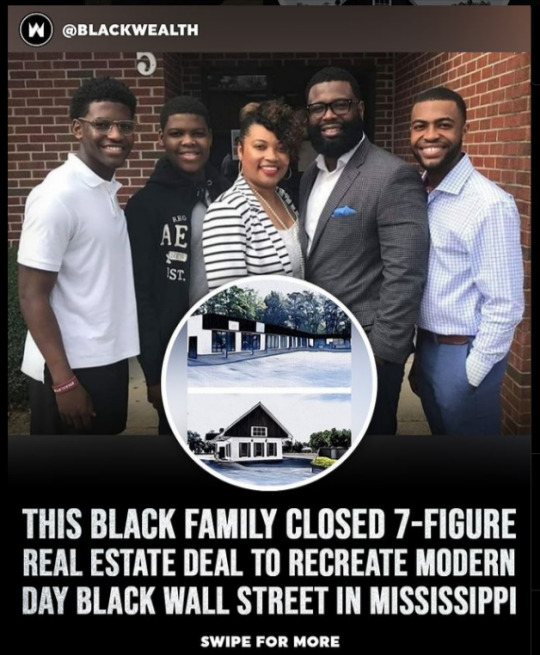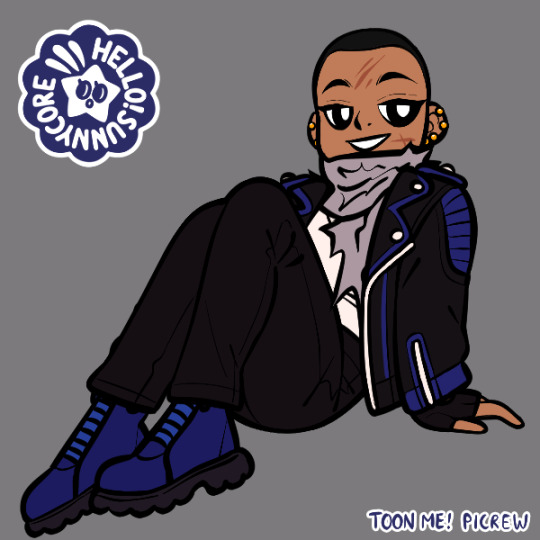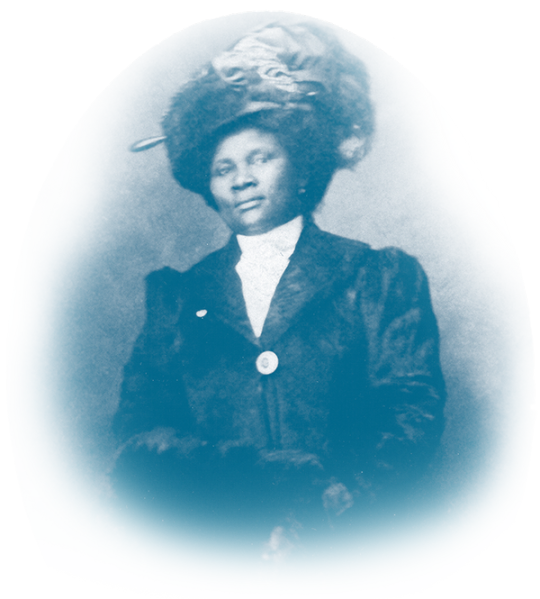#Mississippi Entrepreneur
Photo

Shoot with the “Juicefairy” ,
check her out and cop some juice! <3
#model#juice#fairy#photography#entrepreneur#vegan#veggie#locs#dreads#dreadlocks#blacksbusiness#blackout#mississippi#california#melrose
4 notes
·
View notes
Text
Entrepreneur Brings “Tiny,” Affordable Rentals to MS | Mississippi News
Entrepreneur Brings “Tiny,” Affordable Rentals to MS | Mississippi News
By MAYA MARTIN, The Oxford Eagle
OXFORD, Miss. (AP) — Housing is a stressful situation for many residents in Oxford and Lafayette County.
Many people can attest to the fact that it is hard to find an affordable place to live without moving out of the city or into the next town, but local entrepreneur Josh McGlawn of McGlawn Services is addressing this by creating two small, rental homes in…

View On WordPress
0 notes
Text

After a year of negotiations, entrepreneur Tony A. Reimonenq Jr, his wife, and three sons purchased a Hattiesburg strip mall to transform into a local Black Wall Street.
-
In this purchase, the family joins Mississippi’s rare three percent of African Americans brokering million-dollar deals, expanding their family-owned firm with Greenwood Plaza, their second major venture.
-
This purchase advances the Reimonenq family’s mission to revitalize Tulsa and Mound Bayou’s Black Wall Streets, empowering aspiring entrepreneurs. ❤️❤️❤️
-
80 notes
·
View notes
Photo

Today In History Oprah Winfrey, was born in Kosciusko, Mississippi on this date January 29, 1954. She is a media conglomerate, actress, producer, and global philanthropist, whose syndicated daily talk show was among the most popular of the genre. Oprah became one of the richest and most influential women in the world, who transitioned her hit talk show “The Oprah Winfrey Show” into a media and business empire. She reinvested the profits from her show, plus profits from films like The Color Purple, Beloved and Selma (which her Harpo Productions coproduced) add up to more than $2 billion. In 2011, Oprah launched cable channel OWN. Her 25.5% of the network is worth more than $65 million. The 'Oprah effect' has spread to Weight Watchers where she bought a 10% stake in 2015 and acts as a brand ambassador. In March 2020, she returned to the small screen on Apple TV+ for an interview show about Covid-19 as part of her multiyear pact with the streamer. She is without a question today’s example of a self-made successful African American woman/entrepreneur like Madam C.J. Walker. CARTER™️ Magazine carter-mag.com #cartermagazine #wherehistoryandhiphopmeet #historyandhiphop365 #carter #oprah #oprahwinfrey #blackhistorymonth #blackhistory #history #staywoke https://www.instagram.com/p/Cn__P9hO5xu/?igshid=NGJjMDIxMWI=
#cartermagazine#wherehistoryandhiphopmeet#historyandhiphop365#carter#oprah#oprahwinfrey#blackhistorymonth#blackhistory#history#staywoke
47 notes
·
View notes
Text
Put simply: I didn’t need a fancy j-school degree to become a journalist, but it helped me both improve my skills and to meet people to help my work be read—and, these days, funded. But it was other Columbia studies as part of my mid-career master’s, with more diverse instructors and thinkers than in the j-school then, that turned me into the writer, thinker, entrepreneur and mentor I am now—and taught me to never prop up false narratives wherever they spring from.
Bottom line: I cared and care about racism deeply, and how to finally end it, and I came to understand that it was my job as a white journalist to expose the perils of “whiteness” (not the same as light-colored skin) to us all, that it was my work to do especially as a child of Neshoba County who knew some famous lynch mobsters.
I already knew white folks all around me in Mississippi (and the whole U.S. so don’t get cocky) were either actively working to extend race inequity to keep the reins of power—I mean, nothing has ever been more obvious so stop the act, people—but also that my early censored Mississippi education kept me from understanding the connections and pathways out of this sick mess. The censored history and causes to be exposed were about people who looked like me, not to mention most of my journalism profs.
My real grad-school education came after I crept shyly into the Institute for Research in African-American Studies and asked Dr. Manning Marable to allow me into his Black Intellectuals graduate seminar. And I read, listened, thought. A lot. I had no idea that I would soon return to Mississippi—but I know now that my studies with Dr. Marable and my white adviser Andie Tucker (a former PBS producer) urging me to come home to Mississippi and report about race, or “whiteness,” rewrote my future.
8 notes
·
View notes
Text
Louise "Lou" Ledet [NYTF]

Right on cue, Lou came stalking out of the woods. She crouched by the body, scanning the forest floor. Her hood was pulled back revealing her stern face, shaved head, and eyes that could cut steel. (Knight of Dawn, Chapter 11)
Full Name: Louise Seraphina Ledet
Pronouns: she/they
Title: Queen Consort of State (Louisiana)
Gender: nonbinary (uses female titles)
Sexuality: demisexual
Birthday (Age at start): March 9th, 2163
Parents: Etienne "Marcel" Ledet (deceased), Aurelie Corinne Boudreaux Ledet (deceased)
Siblings: Lisanne Ledet (deceased)
Spouse: Achilles Eloi Gauthier (deceased), ค̡̮̲͚̺̖͖͔͍ͮ๔̡͉̙̝͔͇̌ͥ̃ͅг̷̻̠̆̔เ̶̲͕͎͌ค̠̪̰̱̭̩̐ͩͣ͞ภ̢̬͈ͣͦ ̵̜̦͈̠͇ͨͨ̒͛Շ̤͉̲̹̼̠̎͂̔͢ค̴̙͚͎̭̱̠͓͍̆̌ͫ̐к̰͙̦̘̣̔̎̍́є̇̑̍ͧ͏̗̭̠๏͍̝͉̹̼̮́͝ ̃̓͏̱̝͕๒̦͔̺̮͆̈́͒͋͠є̧͍͎͚̣̟͉̗ͥ͐̉ͅг̢̝̥̙̱͈̇ﻮ̧̖̗͕̽̂̌̚ͅє̨͙̙̣͓̘͕̻̑г͕̪̱̭ͪ̊ͭ͘๏̧̙͈͇̻͔͍̬ͪภ̙̣ͨ͗̽͢
Notable physical features: shaved or half-shaved head (depending on the book), scars on her face, usually wearing tactical gear
Personality: unstable, bitter, paranoid, impulsive, odd, shrewd, quiet



Extended Introduction
(CW for Child Marriage)
Louise Seraphina Ledet (Gauthier) is the intriguing outsider who lives not too far from the Perimeter. They are a mother figure to Lennox at their best, and an absolute nightmare to deal with at their worst. Lou is highly unstable and prone to acting violently, even towards those she cares about.
Lou was the second of two daughters born in the New Orleans Parish Zone of Louisiana to influential entrepreneurs who controlled much of the food supply in the old Ninth Ward. Lisanne, her older sister, married the Prince of the New Orleans Parish at the time, Achilles Gauthier. Soon after, the previous King of State died, and Achilles assumed the role, making a pregnant Lisanne the Queen Consort of State. Lisanne died in childbirth, and King Gauthier, inflated with egotistical power, blamed the Ledet family and demanded to marry the then-15 year old Louise Ledet. Marcel and Aurelie allowed for this to happen.
Less than six months after their marriage, King Gauthier bled to death after having his genitals removed, and Louise Ledet fled the state. Nowadays, Lou can be found all over the states of Louisiana, Mississippi, Alabama, and most often, Georgia. They have a scattering of safe homes across the southeast and continue to rule the state of Louisiana from their odd isolation. Lou rarely returns home.
NYTF WIP PAGE
Tag List (reply or dm to be added or removed; I pulled from the old tag list + the call post):@author-a-holmes, @soul-write @flowerprose @ceph-the-ghost-writer @theglitchywriterboi @when-wax-wings-melt @thechaoticflowergarden @lyralit @penspiration-writing @samatedeansbroccoli @charlesjosephwrites @italiangothicwriteblr @thetruearchmagos @pineapple-lover-boy @unilightwrites @sanguine-arena @bardic-tales @joshuaorrizonte @blind-the-winds @circa-specturgia @hymnonlips @aloeverawrites @the-stray-storyteller @writeblrsupport @starlit-skys @kyuponstories @guessillcallitart @magic-is-something-we-create @talesofsorrowandofruin @writingonmymind @imslowlydisintegrating @worldsfromhoney
#character introduction#writeblr#writing#character development#oc#oc intro#writeblr stuff#athenswrites#nytf#louise ledet
6 notes
·
View notes
Text
The American Civil War Represented in the Willauer Family.
It is common to describe the Civil War as brother against brother, however, in the case of the Willauer family this turn-of-phrase was literal. This post is about the children of Samuel Willauer (1799-1870) and Hanna “Grubb” Willauer (1804-1878). Samuel and Hanna had seven children who survived to adulthood. The four involved in this microcosm of the larger national strife were; Mary Willauer (1825-1904) the oldest sibling and the catalyst for the proceeding events, Seneca Willauer (1833-1916), the oldest son and the parent’s appointed leader of the siblings, Jonathan Willauer (1834-1864), and Samuel Willauer Jr. (1842-1862).
This story begins in the summer of 1846, Mary traveled from Pennsylvania to stay with an uncle, who served as a physician at a furnace, in West Point Tennessee. It was here Mary would meet her future husband. In Bruce Shackelford’s book, The Wests of Texas: Cattle Ranching Entrepreneurs, Mary admiringly wrote of him to her parents. Her parents agreed, Washington West (1813-1889) was an excellent choice as a prospective husband. He owned the iron furnace and was established in the community, but they disapproved of him owning slaves. Shackelford’s book describes the Willauers as Mennonites and strongly against the institution of slavery. Never-the-less the two married on October 20th, 1847. Tennessee became Mary’s home.
In 1854, Washington, who was called Wash, sold the iron works to move the family to Texas. Mary’s parents offered to sell them their apple-farm in Pennsylvania. They feared the family relocating into the wild and desired to keep their children and grandchildren close. The Wests refused, instead, they traveled down the Mississippi River to Louisiana, from there they crossed the border into Texas. To ease her parents’ concerns she traveled with her brothers, Seneca, and Jonathan. These pioneers established a homestead in Lavaca County, which they named Sweet Home. After, her brother Seneca returned to Pennsylvania, but Jonathan, taken by the opportunities in Texas, decided to stay. He established his own ranch near the Wests’ estate.
Mary, Wash, and Jonathan maintained connections with relatives back east. In spring of 1861, with the beginning of the Civil War, the border between the Northern and Southern States became impassable, however, the families maintained regular correspondence by sending mail through Mexico. The siblings avoided fighting until 1862, in May of that year Jonathan joined the Confederate forces, as a private in the 21st Texas Cavalry and in August Seneca and Samuel Jr. joined the 116th Pennsylvania Infantry, as a lieutenant and a private.
Seneca and Samuel are depicted in St. Clair Mulholland’s book, The Story of the 116th Regiment, Pennsylvania Volunteers in the War of the Rebellion. The first battle in which they fought was Fredericksburg. Mulholland describes the assault on the sunken road writing, “Just before moving…Lieutenant Seneca G. Willauer, was badly torn by a shell … He [asked] with placid voice, ‘Colonel, do you think that I should go on with my company?’ No doubt had he been told to go on… he would have done so.” Mulholland also reports on Samuel, who did not survive, “Willauer’s brother died a very heroic death. He was first shot through the hand, then through the body… then both feet were cut off by a shell; he was still living… the stretcher-carriers took him…to the hospital where he died during the night.” Seneca is next mentioned at Bristoe Station where he narrowly avoided capture while riding in the dark, “Captain Willauer…found himself among the Confederate cavalry... He quietly rode among them until…making a break for his own line, succeeded in getting away safely.” Seneca stayed with the 116th until the battle of Gettysburg. After, he was transferred to Washington D.C.
Shackelford describes Jonathan’s service in the Confederate army through his letters to the Wests. Jonathan had wholeheartedly embraced the Southern cause in his letters when he refers to his nephews as “a fine prospect for a crop in Texas [and] a great advantage to the state and the Confederacy.”He spent much of the war in Arkansas, however in 1864 his unit participated in the Red River campaign in Louisiana. He was killed in a skirmish on April 23rd, 1864. Seneca was mentioned one final time in James Swanson’s book Manhunt: The 12-Day Chase for Lincoln’s Killer. Seneca led a cavalry unit in the search for the assassin John Wilkes Booth. He writes, “dispatch from a Captain Willauer… J. Wilkes Booth was seen passing through Great Mills on foot about 9 o’clock this morning… Everything shall be done that can be done to secure him.”
The turn-of-phrase brother against brother has been applied to the Civil War, but for the Willauer brothers it was literal. Jonathan fought for the Confederates while Seneca and Samuel fought for the Union. Though many sources exist of correspondence between family members and the brothers, there is no evidence that they ever wrote to each other or even mentioned each other. The Civil War was the deadliest war in American history and the experience of the Willauer family serves as a microcosm for this national tragedy.
Bibliography:
Mulholland, St. Clair A. (St. Clair Augustin), and Lawrence Frederick. Kohl. The Story of the 116th Regiment, Pennsylvania Volunteers in the War of the Rebellion. New York: Fordham University Press, 1996.
Shackelford, Bruce M. The Wests of Texas : Cattle Ranching Entrepreneurs. Denton: Texas State Historical Association, 2015.
Swanson, James L. Manhunt: The Twelve-Day Chase for Lincoln’s Killer. 1st ed. New York: William Morrow, 2006.
2 notes
·
View notes
Text

Black Wall Street USA Historic Legend: Madam C.J. Walker
Madam C.J. Walker was born Sarah Breedlove on December 23, 1867, on a cotton plantation near Delta, Louisiana. Her parents, Owen and Minerva, were recently freed slaves, and Sarah, who was their fifth child, was the first in her family to be free-born. Minerva Breedlove died in 1874 and Owen passed away the following year, both due to unknown causes, and Sarah became an orphan at the age of 7. After her parents' passing, Sarah was sent to live with her sister, Louvinia, and her brother-in-law. The three moved to Vicksburg, Mississippi, in 1877, where Sarah picked cotton and was likely employed doing household work, although no documentation exists verifying her employment at the time.
At age 14, to escape both her oppressive working environment and the frequent mistreatment she endured at the hands of her brother-in-law, Sarah married a man named Moses McWilliams. On June 6, 1885, Sarah gave birth to a daughter, A'Leila. When Moses died two years later, Sarah and A'Lelia moved to St. Louis, where Sarah's brothers had established themselves as barbers. There, Sarah found work as a washerwoman, earning $1.50 a day—enough to send her daughter to the city's public schools. She also attended public night school whenever she could. While in St. Louis, Breedlove met her second husband Charles J. Walker, who worked in advertising and would later help promote her hair care business.
During the 1890s, Sarah Breedlove developed a scalp disorder that caused her to lose much of her hair, and she began to experiment with both home remedies and store-bought hair care treatments in an attempt to improve her condition. In 1905, Breedlove was hired as a commission agent by Annie Turnbo Malone—a successful, black, hair care product entrepreneur—and she moved to Denver, Colorado. While there, Breedlove's husband Charles helped her create advertisements for a hair care treatment for African Americans that she was perfecting. Her husband also encouraged her to use the more recognizable name "Madam C.J. Walker," by which she was thereafter known.
In 1907, Walker and her husband traveled around the South and Southeast promoting her products and giving lecture demonstrations of her "Walker Method"—involving her own formula for pomade, brushing and the use of heated combs.
As profits continued to grow, in 1908 Walker opened a factory and a beauty school in Pittsburgh, and by 1910, when Walker transferred her business operations to Indianapolis, the Madame C.J. Walker Manufacturing Company had become wildly successful, with profits that were the modern-day equivalent of several million dollars. In Indianapolis, the company not only manufactured cosmetics, but trained sales beauticians. © 2014 Black Wall Street USA. These "Walker Agents" became well known throughout the black communities of the United States. In turn, they promoted Walker's philosophy of "cleanliness and loveliness" as a means of advancing the status of African-Americans. An innovator, Walker organized clubs and conventions for her representatives, which recognized not only successful sales, but also philanthropic and educational efforts among African-Americans.
In 1913, Walker and Charles divorced, and she traveled throughout Latin America and the Caribbean promoting her business and recruiting others to teach her hair care methods. While her mother traveled, A'Lelia Walker helped facilitate the purchase of property in Harlem, New York, recognizing that the area would be an important base for future business operations. In 1916, upon returning from her travels, Walker moved to her new townhouse in Harlem. From there, she would continue to operate her business, while leaving the day-to-day operations of her factory in Indianapolis to its forelady.
Walker quickly immersed herself in Harlem's social and political culture. She founded philanthropies that included educational scholarships and donations to homes for the elderly, the National Association for the Advancement of Colored People, and the National Conference on Lynching, among other organizations focused on improving the lives of African-Americans. She also donated the largest amount of money by an African-American toward the construction of an Indianapolis YMCA in 1913.
Madam C.J. Walker died of hypertension on May 25, 1919, at age 51, at the estate home she had built for herself in Irvington-on-Hudson, New York. At the time of her death, Walker was sole owner of her business, which was valued at more than $1 million. © 2014 Black Wall Street USA. Her personal fortune was estimated at between $600,000 and $700,000. Today, Walker is widely credited as the first American woman to become a self-made millionaire.
Walker left one-third of her estate to her daughter, A'Lelia Walker—who would also become well-known as an important part of the cultural Harlem Renaissance—and the remainder to various charities. Walker's funeral took place at her home, Villa Lewaro, in Irvington-on-Hudson, which was designated a National Historic Landmark, and she was buried at Woodlawn Cemetery in the Bronx, New York.
In 1927, the Walker Building, an arts center that Walker had begun work on before her death, was opened in Indianapolis. An important African-American cultural center for decades, it is now a registered National Historic Landmark. In 1998, the United States Postal Service issued a stamp of Madam C.J. Walker as part of its "Black Heritage" series.
11 notes
·
View notes
Text


Madam CJ Walker (December 23, 1867 - May 25, 1919)
Sarah Breedlove, known by the name Madam CJ Walker, was born in Delta, Louisiana on a plantation to which her parents were enslaved before the end of the Civil War. She was their 5th child, but the first child born free after the Emancipation Proclamation. Becoming an orphan at 7 years old, her and her sister Louvenia worked in the cotton fields of Delta and the nearby Vicksburg, Mississippi.
At age 14, to escape abuse from her brother-in-law, she married to a man named Moses McWilliams (having a daughter with him, A’Lelia, in 1885) and eventually became a widow at age 20. She moved with her daughter back with her brothers who had become barbers making $1.50 a day, and made enough to send her daughter to school. In the 1890s, Sarah began to suffer from an ailment that caused her to begin losing her hair. After consulting her brothers, she used many products to try and help her situation, and her brothers gave her products made by one Annie Malone, a black entrepreneur.
Moving to Denver Colorado to become a sales agent for Miss Malone, she married one Charles Joseph Walker. Afterwards she changed her name to “Madam” CJ Walker, and started selling her own line of hair products for American black women. Her husband, working in newspaper advertisements, helped promote her products, though eventually the two divorced. After the divorce, she moved to Indianapolis and opened a manufacturing factory for her products, employing 40,000 black women and men in the US, central America, and the Caribbean, founding the “National Negro Cosmetics Manufacturers association” in 1917.
Fun facts
Upon moving to Indianapolis, she donated $1,000 (about $30,000 in today’s amount) to the first YMCA open to black Americans, and funded scholarships for women to attend Tuskegee Institute
She is the first black woman millionaire in the US
She established clubs for her employees so they could give to their communities
You can learn more about Madam CJ Walker through the following sources:
https://madamcjwalker.com/about/
https://www.womenshistory.org/education-resources/biographies/madam-cj-walker
https://www.google.com/amp/s/www.history.com/.amp/topics/black-history/madame-c-j-walker
#i love women#women#loving women#loving womyn#celebrating women#herstorical women#women in herstory#herstory#women in history#Madam CJ Walker#black women in herstory#black women in history#herstorical black women#historical black women
26 notes
·
View notes
Link
2 notes
·
View notes
Text
4 notes
·
View notes
Text

2024-04-12: River Denizens (Random Tables)
The Mississippi River has a few distinctive types of boats in this era that you may not be aware of: gambling boats and shantyboats.
Gambling Boats
Gambling boats tended to be larger crafts that could accommodate many people and functioned as casinos. Laws in the area allowed gambling and casinos so long as it wasn't on Mississippi soil, but attentive entrepreneurs took advantage of the phrasing to create a culture boat-based casinos. Many casino boats were old paddle steamers. Some traveled up and down the river, spending days or weeks in one place; others were effectively permanently moored to the riverbed and never moved.
Names for Riverboat Casinos (1d20)
Lucky Draw
King David
Mississippi Diamond
Jewel of the River
Moonlight
Mighty Mississippi
The Fish House
Black Bear's Den
Gold and Cotton
Dixie Belle
Delta Star
The Regal
River Chariot
Liberty Jack's
Magnolia Blossom
New Orleans Entertainer
Yellow Dog
El Paradiso
Chicago Pinnacle
Star of the South
Shantyboats
Shantyboats are houseboats, often amateur-made, that people use as permanent homes on the river. Although some people lived in shantyboats for the freedom it offered, most lived in them out of necessity. The Great Depression was the peak era for shantyboats, where thousands of people took to the rivers that fed into the Mississippi in search of better jobs.

Most shantyboats had an outboard motor that could navigate against the currents, but were incapable of doing anything but floating downstream. Like the gambling boats, some shantyboats stayed in a location for a short time, while others were moored in a single place for an extended period of time. Some shantyboats (either whole or in pieces) even became permanent houses on land.
If you need a quick description of a shantyboat, roll a complete set of 7 polyhedral dice and consult the tables below:
Number of Rooms (1d4)
Single room
Two rooms
Three rooms
Four rooms
General Appearance (1d6)
Amateur work that is probably not fit for long term human habitation
Shows obvious signs of patching with mismatched materials
Definitely in need of repair, but most issues are relatively minor
Weather-beaten, but still sturdy
Well-loved and well-maintained
Freshly-built or close to it
Notable Features (1d8)
Porches on both the bow and stern
Windows with shutters that work
A loft area
Quality furniture
High ceilings (for a boat, at least)
Sturdy door
Spacious interior
Relatively abundant storage space
Construction Style (d10)
Assembled from bare scrap lumber with a tin roof
Painted wood siding with asphalt shingles
Whitewashed wood with a rounded asphalt roof
Flat tin roof atop stacked logs
Corrugated tin siding with a matching tin roof
Unpainted lumber walls with a rounded tin roof
The level of quality on the joinery seems like it was mass-produced
Slightly pitched asphalt shingle roof with plywood siding
Plywood walls with a flat asphalt roof
Timber frame whose walls are partially clad in plywood and the remaining walls are covered by corrugated tin.
Where The Inhabitants Were Coming From (d00)
Ohio
Tennessee
Kentucky
Missouri
Illinois
Louisiana
Wisconsin
Minnesota
Iowa
Mississippi, south of the Delta (like Natchez or Vicksburg)
Inhabitant Hook (1d12)
The inhabitants are trying to relocate the boat, but having trouble.
Property owners are trying to stop the boat inhabitants from squatting on their land.
A shantyboat is hiding a cache of liquor that is expected for delivery somewhere else along the river.
One of the inhabitants has fallen gravely ill.
A skiff that belongs to the inhabitants of the house has been lost or stolen.
Newly arrived to the area, the inhabitants are looking for work but are short on money.
Someone is pursuing the inhabitants of the shantyboat, forcing them to move often.
There's a huge creature in the river that would be worth a small fortune at the market, and the inhabitants want to catch it.
The shantyboat is drydocked for repairs on the hull, but needed materials are scarce.
Livestock or a pet owned by the inhabitants has gone missing.
Someone aboard the shantyboat has come into possession of a sudden windfall and is trying to figure out what to do with it.
The shantyboat has been recently burglarized and vandalized by someone.
Family Name of Inhabitants (1d20)
Howell
Johnson
Hayes
Sawyer
Roberts
McGinty
Burns
Porter
Walton
O'Neil
Griffin
Avery
Collins
Kent
Nichols
Long
Teach
Godwin
Mackey
Greenblatt
0 notes
Text
Dreka Gates Talks Holistic Healing In Beauty Wellness & Cannabis
Trailblazing in her rite, celebrity entrepreneur Dreka Gates has taken a seat in the C-suite in multiple industries including beauty, wellness, and holistic spaces. And that’s just on a Monday. By Tuesday, Gates is opening doors for people in the cannabis space that look like her.
She is making history as one of the first African-American women to open a dispensary in the state of Mississippi…

View On WordPress
0 notes
Text

The 2024 Esteem Awards Celebration of Honor Finalist
We're gearing up for our annual event celebrating the accomplishments of these outstanding individuals and organizations.
Award finalists will be celebrated at an in-person event on Saturday, July 6, at Sidetrack 3349 N. Halsted in Chicago from 1:00 p.m. to 3:00 p.m. The event is free, and all are welcome to attend this celebration of honor.
Here's a partial list of 2024 EA winners.
Chicago
Outstanding Service, Male: Jerome Montgomery of Project Vida
Outstanding Service, Female: Business Owner/Entrepreneur Stephanie Hart
Future Leaders: Marvin K Thompson
Outstanding Service Social Services/CBO: Proactive Community Services
Outstanding Healthcare Professional: Dr. Maya Green
Artistic Expression: Patric McCoy
Special Recogntion: Art Sims
National
Outstanding Service, Male: Kevin E. Taylor
Outstanding Service, Transgender: Tracee McDaniel
Future Leaders: State of the Mississippi House of Representative for District 66, Fabian Nelson
Outstanding Healthcare Professional: Dr. David Malebranche
Institutional: The T.R.U.T.H. Project
Artistic Expression: Donja R. Love
Special Recognition: Miko Evans
Event sponsors:
AFC
For more information on the honorees and event visit: https://prideindex.com/the-2024-esteem-awards.../
Take a look at our past honorees at http://www.theesteemawards.com/
#prideindexdotcom#theesteemawardsdotcom#black queer women#black lgbt#black gay content creators#black qwoc#black gay#black gay art#black gay pride
1 note
·
View note
Text
Stanley Trezevant III, a Memphis-based Philanthropist/Entrepreneur, dons the title of Certified Shopping Center Manager (CSM) and holds real estate licenses in Tennessee, Mississippi, and Arkansas. A dedicated member of the Urban Land Institute, International Council Shopping Centers, and Lambda Alpha, he thrives on contributing to community safety and prosperity.
1 note
·
View note
Text
Last hurrah for Darwin gay icon John Spellman at memorial
New Post has been published on https://qnews.com.au/last-hurrah-for-darwin-gay-icon-john-spellman-at-memorial/
Last hurrah for Darwin gay icon John Spellman at memorial
Longtime Darwin pub owner John Spellman has been farewelled at a lively funeral service in the Northern Territory.
The gay businessman owned nightclubs and restaurants in Darwin for decades. He died last month, prompting a flood of tributes from locals.
In 1969, John Spellman dressed in drag and opened his Pianola Palace, widely credited as the first gay-friendly Darwin club.
In the following decades, John also ran other popular venues including the Mississippi Queen, Dix and The Train.
At the weekend, the community gathered to farewell John Spellman at a colourful and lively memorial service at Darwin’s Botanic Gardens.
During the service, John’s ashes sat above a wooden “Mississippi Queen” sign surrounded by disco balls. The memorial service was livestreamed online.
Image: courtesy of James Emery
Darwin producer James Emery from Drag Territory said John was a “gay icon and hospitality industry legend” and threw “epic” parties in Darwin.
“John was an extraordinary businessman and entrepreneur who welcomed everyone to his bars,” James told us.
“He supported the gay community privately through donations and accommodation and gave us safe spaces to allow people to be whoever they wanted to be.”
Image: courtesy of James Emery
James said John’s service was a “great party and a family reunion” with speeches, funny stories and memories of the beloved Darwin figure.
“We took over the streets in the CBD with over 60 cars in John’s funeral procession. Horns were blasting and 80s music was pumping,” James said.
John Spellman was a ‘provocateur and protector’
Last week, a moving obituary paid tribute to John Spellman as a “provocateur and protector” of LGBTQIA+ folk in Darwin.
Images: Supplied
Former Mardi Gras President Kate Wickett, Party Passport co-founder Daniel Cunningham and Darwin local Mookie Hesketh remembered John in the obit as a “complex, caring, cantankerous and ultimately generous human.”
“We met him in our late teens in the late 90’s. We were young, gay and discovering who we were in a time and place where we were not always accepted, or even safe,” the trio wrote.
“John was many things to many people, but to us, he will always be someone who provided us with a space to meet friends (new and old) and chosen family, where we could have fun, be ourselves and feel connected, where we felt that we belonged – the Train.
“Thank you John for your hilarious stories, your cutting quips and for providing us a place where we had so much joy.
“You were unapologetic in your ways, and you were a trailblazer.
“From the young, gay kids growing up in Darwin, thank you for not only providing us a refuge, but a place for community.”
View this post on Instagram
A post shared by Drag Territory (@dragterritory)
For the latest LGBTIQA+ Sister Girl and Brother Boy news, entertainment, community stories in Australia, visit qnews.com.au. Check out our latest magazines or find us on Facebook, Twitter, Instagram and YouTube.
0 notes